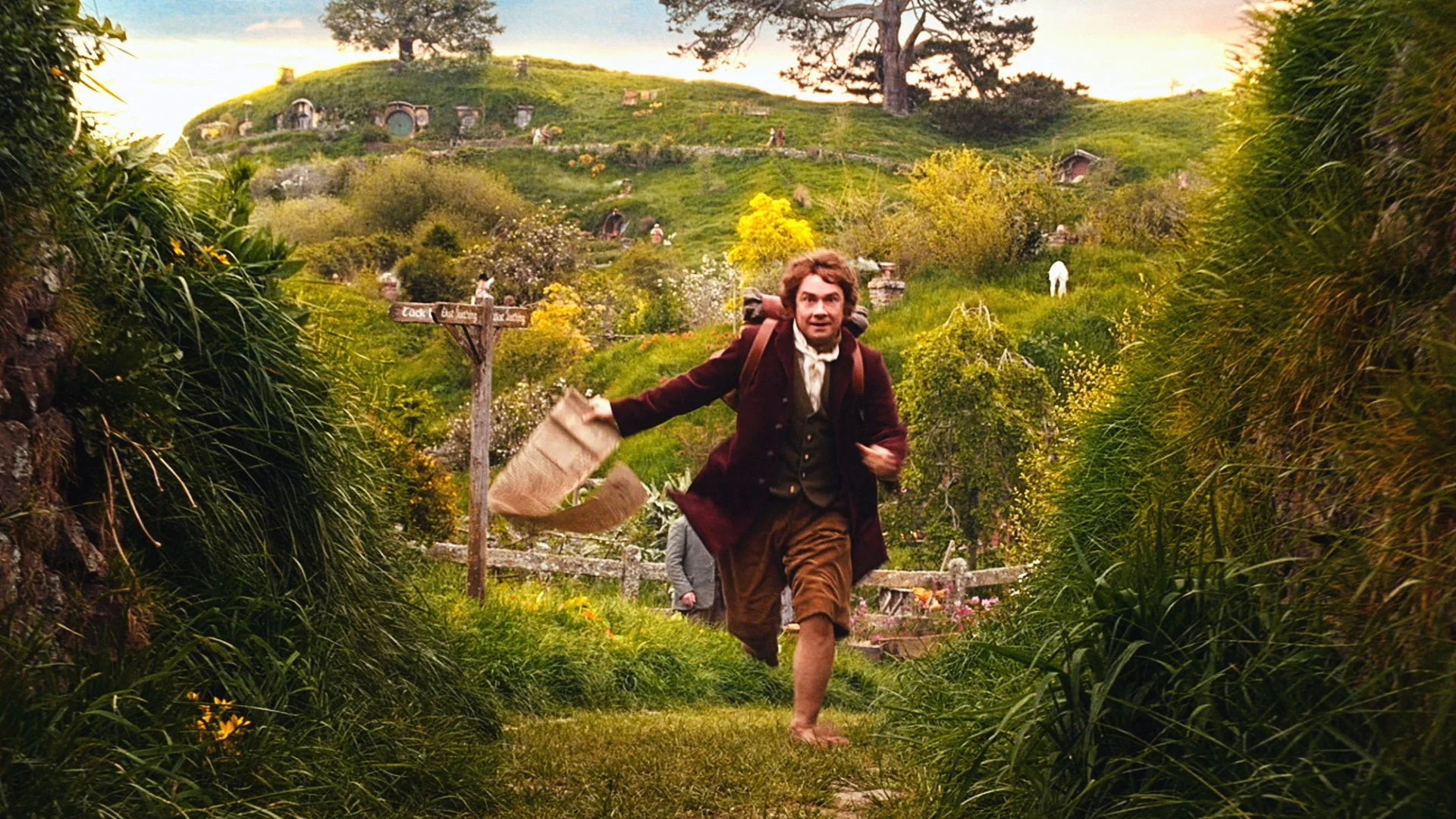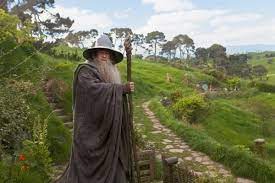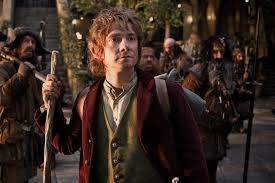🎬 The Hobbit: An Unexpected Journey (2012)

Review of The Hobbit: An Unexpected Journey (2012)
Peter Jackson’s The Hobbit: An Unexpected Journey (2012) serves as the opening chapter of a visually stunning and ambitious trilogy based on J.R.R. Tolkien’s classic novel. While it sets the stage for an epic adventure, the film also takes creative liberties to expand the relatively short source material into a sprawling narrative. With its blend of enchanting landscapes, engaging characters, and thrilling action, An Unexpected Journey is both a nostalgic return to Middle-earth and a bold reimagining of Tolkien’s beloved story.
A Story of Adventure and Belonging
The film begins in the idyllic Shire, where Bilbo Baggins (Martin Freeman), a reserved and comfort-loving hobbit, is drawn into an unexpected adventure by the wizard Gandalf the Grey (Ian McKellen). Bilbo reluctantly joins a company of 13 dwarves, led by Thorin Oakenshield (Richard Armitage), on a quest to reclaim their homeland and treasure from the dragon Smaug.
As the group journeys across Middle-earth, Bilbo must confront his fears and find his courage while forming bonds with the dwarves. Along the way, they encounter trolls, orcs, and goblins, as well as iconic characters like Gollum (Andy Serkis), whose riddle-filled encounter with Bilbo introduces the fateful One Ring.
Martin Freeman’s Charming Performance
Martin Freeman delivers a pitch-perfect performance as Bilbo Baggins, capturing the character’s reluctance, wit, and eventual bravery with remarkable nuance. Freeman’s Bilbo is both relatable and endearing, grounding the larger-than-life story with a deeply human perspective.
Ian McKellen reprises his role as Gandalf with his trademark gravitas and warmth, providing both wisdom and levity. Richard Armitage’s portrayal of Thorin Oakenshield adds a layer of complexity to the film, balancing the character’s stoic leadership with moments of vulnerability and doubt.
The ensemble cast of dwarves, though numerous, is brought to life with distinctive personalities and humor. While some dwarves receive more screen time and development than others, their camaraderie and banter add charm and energy to the journey.
Expanding Middle-earth
Peter Jackson’s decision to expand The Hobbit into three films allows for a deeper exploration of Middle-earth’s lore, drawing from Tolkien’s appendices and other writings. This approach enriches the narrative by providing context for Thorin’s quest and the growing threat of Sauron, as hinted at through the character of the Necromancer.
However, the extended runtime and added subplots have drawn criticism for pacing issues, with some viewers feeling that the story is unnecessarily stretched. While the additional material provides depth for fans of Tolkien’s world, it can occasionally detract from the straightforward charm of the original novel.
Visual Splendor and Technological Innovations
An Unexpected Journey is a visual feast, showcasing the breathtaking landscapes of New Zealand and the meticulous craftsmanship of Weta Workshop. From the rolling hills of the Shire to the eerie depths of Goblin-town, the film immerses viewers in Middle-earth’s diverse and fantastical environments.
The use of 48 frames per second (HFR) technology, a bold choice by Jackson, enhances the clarity and realism of the visuals but received mixed reactions. While some praised the immersive quality of HFR, others found it distracting or overly crisp, reducing the cinematic feel.
The film’s CGI is both a strength and a point of contention. Creatures like Gollum are rendered with astonishing detail and emotion, while other effects, particularly in large-scale action scenes, can feel overwhelming or artificial. The blend of practical effects and CGI is at its best when showcasing intimate moments, such as Bilbo’s encounter with Gollum.
Howard Shore’s Mesmerizing Score
Howard Shore’s musical score is an essential component of An Unexpected Journey, blending familiar themes from The Lord of the Rings with new motifs that capture the spirit of adventure. The rousing “Misty Mountains” theme, sung by Thorin and the dwarves, stands out as a haunting and evocative piece that sets the tone for the quest.
Themes of Home and Courage
At its heart, An Unexpected Journey is a story about finding one’s place in the world and discovering inner strength. Bilbo’s transformation from a timid hobbit to a resourceful and courageous member of the company resonates as a universal theme of growth and self-discovery. The film also explores the concept of home, as both Bilbo and the dwarves grapple with what they’ve lost and what they’re fighting to reclaim.
Critiques and Legacy
While An Unexpected Journey successfully captures the wonder of Tolkien’s world, its slower pacing and reliance on added material have divided audiences. Some viewers appreciate the expanded lore and character development, while others feel that the film lacks the narrative tightness of The Lord of the Rings trilogy.
Despite these criticisms, the film’s charm, performances, and visual splendor have solidified its place as a worthy addition to the Middle-earth saga. It serves as both a nostalgic return for longtime fans and an accessible entry point for newcomers.
Conclusion
The Hobbit: An Unexpected Journey (2012) is a visually stunning and heartfelt beginning to Bilbo Baggins’ epic adventure. While its expanded scope and leisurely pace may not appeal to everyone, the film captures the magic and majesty of Middle-earth with sincerity and passion. Anchored by Martin Freeman’s delightful performance and Peter Jackson’s visionary direction, An Unexpected Journey invites audiences to once again lose themselves in Tolkien’s enchanting world, proving that even the smallest person can embark on the grandest of adventures.